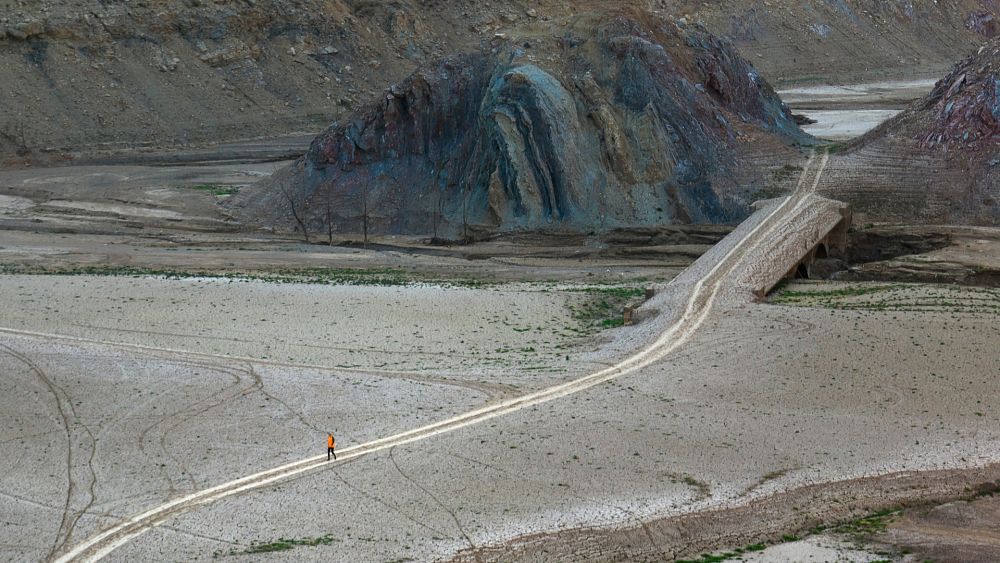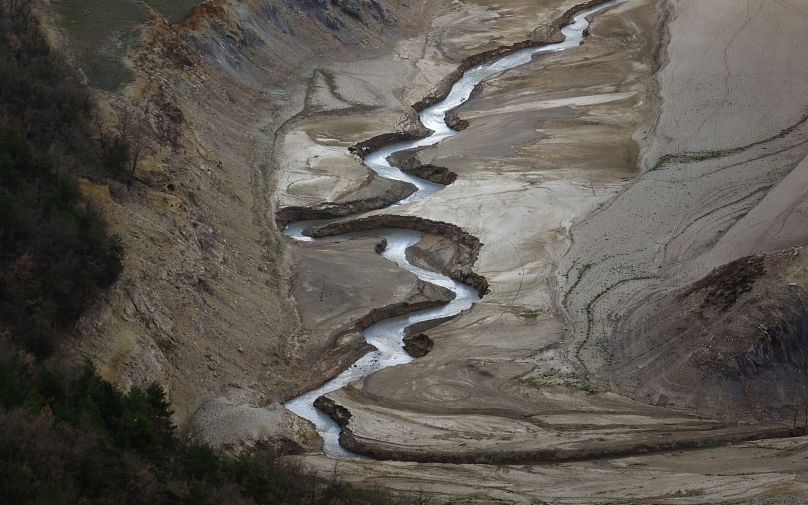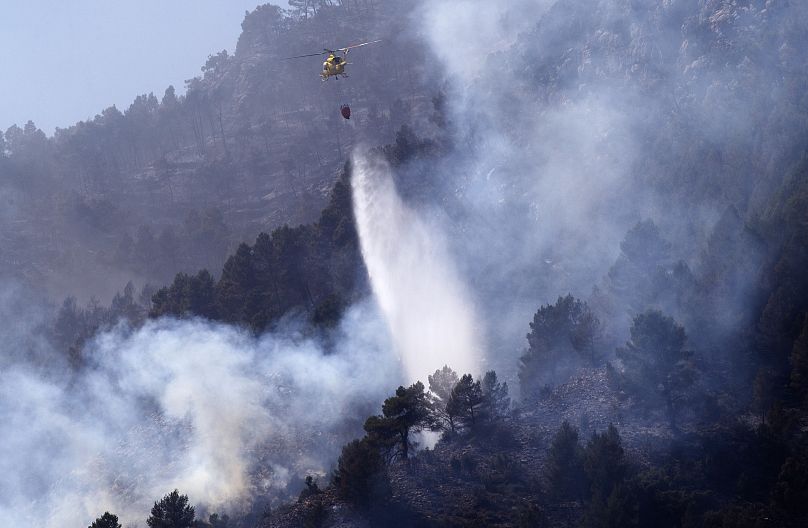
Last year, parts of Europe saw drought so severe that supplies of drinking water were limited.
A winter with little rainfall was followed by one of the driest summers on record as heatwaves swept across the continent. Millions of people suffered the consequences of these extreme weather conditions.
Another dry winter with low rain and snowfall has failed to replenish already dwindling supplies. And the European Commission has warned that European and Mediterranean regions could be in for another extreme summer this year.
Now some residents in regions that saw the worst of last year’s drought are preparing for a repeat of the restrictions they faced previously.
Spain expects ‘more of the same’ this summer
In northeastern Spain, the country’s weather service Aemet says that drought has reached “extraordinary proportions”.
One of the regions suffering the most is Catalonia. The Sau reservoir is at 9 per cent of its total capacity and drinking water for the six million people who live in Barcelona’s metropolitan area is at risk.
Several municipalities have such low reserves that tankers are being brought in to supply people with water.
Last year, people in the municipality of Bonastre in Baix Penedès, Catalonia were limited to using water for around four hours a day. There aren’t currently any restrictions, but residents are resigned to a return of the situation they saw last summer.
“We aren’t afraid that there will be restrictions again because it is something we are used to,” says Mario Ferrara, a resident of Bonastre.
“This year we know it will be more of the same.”
The town council has built a new well, Mario says, because the one they were using before has dried up. It was supplied by the Gaia aquifer which is feeling the effects of the drought.

The new well was part of a plan by the municipality to curb water shortages and restrictions and was completed at the end of 2022.
But, Mario adds, “this is more of a stopgap than a definitive solution.”
This year he says he is preparing for summer by buying bottles and jerry cans of water.
“The solution once restrictions are in place will be to shower before the neighbours so that we don’t run out of water.”
‘Almost a year’ of water shortages in Castellcir
The village of Castellcir just north of Barcelona has 800 residents. They have been using tankers for “almost a year” to get water.
Isabel Forner is the owner of a clothing shop in the village.
“We live in the mountains and the land is drier than ever,” she tells Euronews Green.
“It hasn’t rained at all this winter and the land was so dry that when it snowed, it sucked it up like a hoover. It didn’t last five seconds because of the lack of water.”
Four times a day, trucks come to refill their water tanks. The town council has sent a letter to residents about the water shortages asking them to reduce their consumption and not to fill their pools. This year’s communication is more severe than ever before.
“They claim that if the situation continues, water restrictions will be implemented,” Isabel explains.
One of the biggest problems is people who come from abroad to the village on holiday and ignore the restrictions, she says. Holidaymakers also bring concerns about wildfires.
“Even though you can’t have fires and it’s against the regulations, they have barbecues.”
She worries that authorities will implement restrictions as tough as those seen in Bonastre last year. But, even if she doesn’t like the restrictions, Isabel says it’s better that they start to put them in place now instead of when there is no water left.

People prepare for a dry summer in Italy’s Po basin
The north of Italy suffered the worst droughts it has seen in 70 years last summer. Some regions almost entirely ran out of water to irrigate crops, putting food supplies at risk. Levels in the Po River fell to a record low.
And the basin of Italy’s longest river is still suffering the effects after a winter with little rain. This winter the waterway has remained at levels rarely ever seen even in the height of summer.
Leonardo Pozzati is a local business owner and resident of Ariano nel Polesine village along the Po River.
“I have horses and other animals. Their water supply comes directly from the ground using a pump and a well around 10 metres deep,” he explains.
Leonardo Pozzati
Local business owner in Ariano nel Polesine
“This year, there’s a very real possibility that if the groundwater level drops low enough, the well will go dry.”
Leonardo says this could be a problem for a lot of people in the area who use wells to get water for their plants and crops.
“To prepare, I’m looking at how to link up the animals’ water supply to a mains water supply, but this obviously costs money,” he adds.
“Last year, water companies and local councils restricted the way water could be used or at what time of day, so I might also have to fill up vats in the early morning or evening when water use is permitted.”
‘My solution this year is to pray and hope’
Maria Camisotti, another of Ariano nel Polesine’s residents, is cutting back in anticipation of more water restrictions this summer.
“My water supply for my vineyard and garden comes from the mains,” she says.
“I haven’t planted many vegetables this year because I’m worried they’ll cut the supply or restrict the hours like last year.”
Last summer she watered her crops anyway, despite the restrictions, but this year all she has planted are peas.
“In the summer, I’ll fill buckets with water and put the plants into them. This way I also hope to save money because it costs a lot from the mains,” she explains.
Maria Camisotti
Resident of Ariano nel Polesine
“Fifty years ago there was the opposite problem completely, the Po river was full, there was too much water. But already the corn looks poor quality because it’s too dry.
“There have now been two very dry winters. My solution this year is to pray and hope.”
